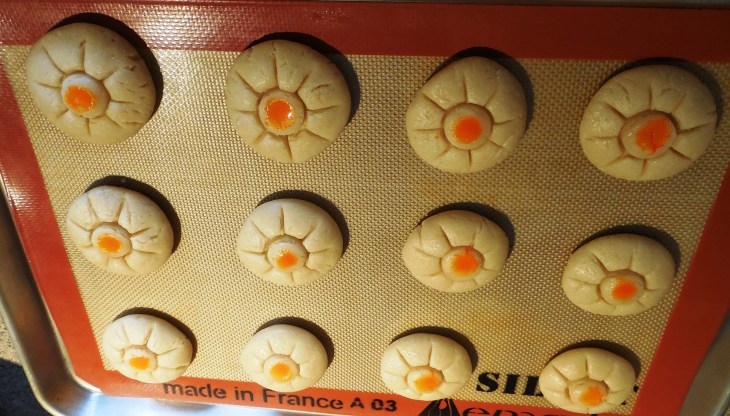By Sultan Jessa
MONTREAL – Quebec: Nankhatai is fast becoming a favourite snack with tea time around the globe.

Nankhatai is derived from a Persian word naan, which means bread and khatai comes from the Afghani word meaning biscuit. In Afghanistan and Northeast Iran, these biscuits are called Kulcha-e-Khataye. But, this popular snack seems to have originated in Surat, India, in the 16th century at a time when the Dutch and Indians were engaged in a thriving spice trade. Over the years, nankhatai has taken different shapes, sizes and ingredients.

This soft and crunchy nankhatai was very popular among Ismailis in East Africa. Most of us know or have heard of the British and Portuguese influence on the Indian food. But, we still don’t know a lot about the Dutch fingerprints on Indian food.
During the 16th century many Dutch colonies cropped up all over the Gujarati city of Surat. Anxious for a taste of home, the Dutch people set up bakeries and often employing Parsis to run it. This went on for many years until Britain wrestled control from the Dutch. One of the Parsi run factories survived and this is where the nankhatai came from. The Parsis were always fascinated by the egg less Scottish shortbread, favored by sailors because it kept for a long time on voyages.
Gradually other items like cardamom, cashews, almonds and pistachios were added.

Today, the nankhatai we know with a light golden circle and it has a dense, brittle and buttery texture. It is excellent with a hot cup of Indian tea.
The Parsis have taken a liking to nankhatai. When my parents started the Kilimanjaro Electric Bakery in Arusha in Northern Tanzania, we used to make nankhatai but the recipe was very different.
We often distributed nankhatai in our Jamat Khana’s (praying houses) as jura or as a blessing. My late mother was exceptionally good at making nankhatais and this is when my wife Rosila took a liking to nankhatai although she does not have a sweet tooth.

Over the years, we have made some adjustments to the recipe. Our recipe is very different. Rosila found out the best khatai is made from margarines instead of butter. She normally uses Becel margarine made for baking. She prefers the margarine sticks because they come in correct measurements. My mother did not use any measurements. She only used her hand. This was too confusing for Rosila because there were no proper measurements. She watched my mother make nankhatais and devised her own measurements.
Today, I love making nankhatai and I love making it and eating it.
During a reunion in Toronto many years ago, two ladies who helped with decorations, came to me and said the thing they remembered the most about Arusha were nankhatai made in our bakery. I told the ladies I had some nankhatai with me because when we travel, we always take some snacks with us.
Here is our recipe:
One cup of margarine
One cup sugar
¾ cup semolina or sooji
Vanilla essence
One egg
¾ tsp of baking powder
Between three to four cups of all purpose flour (you add all purpose flour until it is easy to roll all the ingredients into tiny balls and then flattening them)
Method of making nankhatai
Cream margarine, sugar and add some Vanilla essence and continue mixing it until creamy
Add sooji or semolina
Add flour and baking powder until the dough is stiff and it is easy to roll it into small balls
Arrange these balls on greased cookie sheet.
We flatten the balls and use the apple core for intricate design…a very easy way

We used orange liquid food color for the dot
We use the cake mixture for making nankhatai
Switch on the oven and set it at 350 degrees
After the oven alarm goes on, place the nankhatai in the oven and bake it for 15 to 20 minutes or until the nankhatai is golden brown.
Remove from the racks and let it cool for a little while…
Enjoy your nankhatai with tea
Congratulation to SULTAN Jessa for introduced Indian food as Indian-culture, the same we-used in Chinese UNESCO tourism,
tour included visited the mystical Hakka Earthen Building(Tulou)
the holy pilgrimage to Goddess Mazu (multiple religious culture-
world heritage:wuyi mount and wonderful cuisine culture
in occsion of 150° Anniversary of Gandhi birth 2019 I put this news in Gandhi -project, if Sultan Jessa is agree
Rosa Dalmiglio
China World Peace Foundation
LikeLike
I was born in Karachi in 1939. Dharkhana JK was in Kharadar and all the buildings belonged to Ismailis with 100% Ismaili residents and many tea shops also belonged to Ismailis on Paria Street. I remember one shop owned by Hashim Karim used to serve very tasty Nankhatai and was very popular with students coming out of Aga Khan School.
LikeLiked by 1 person